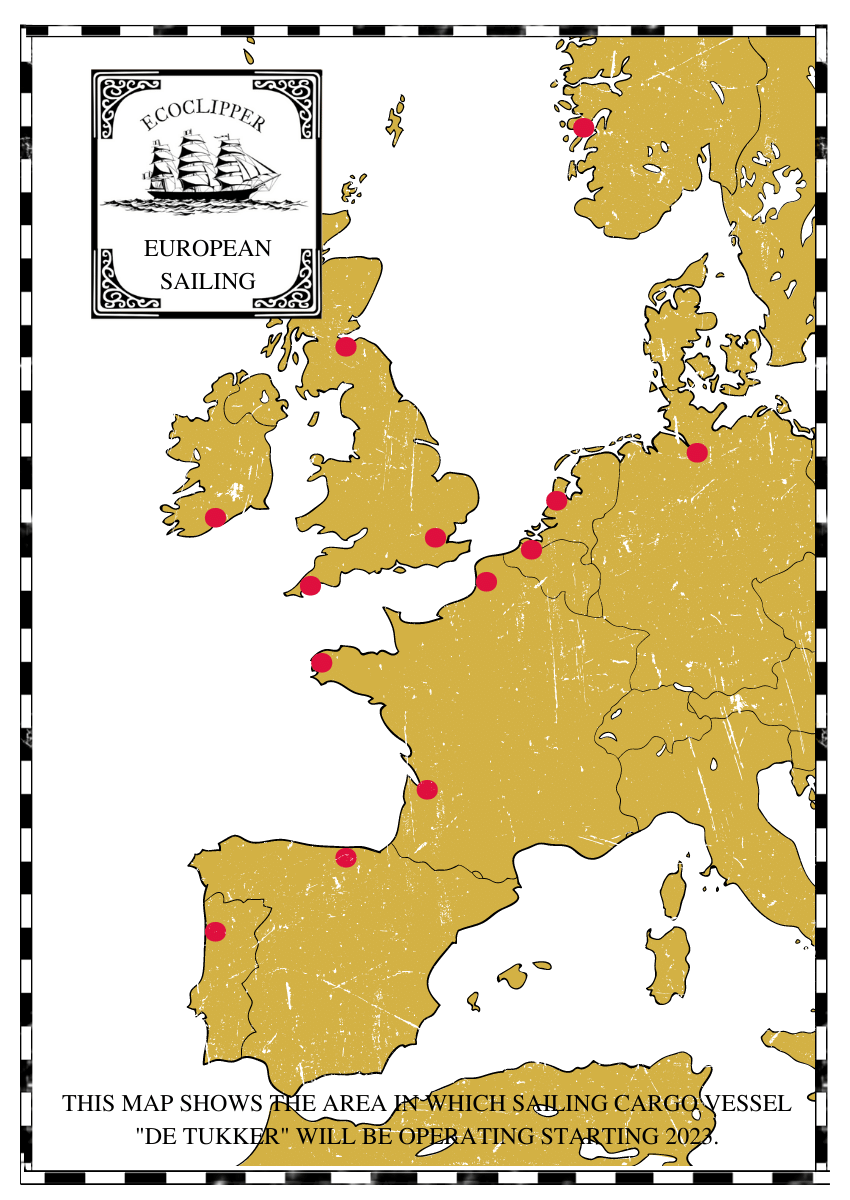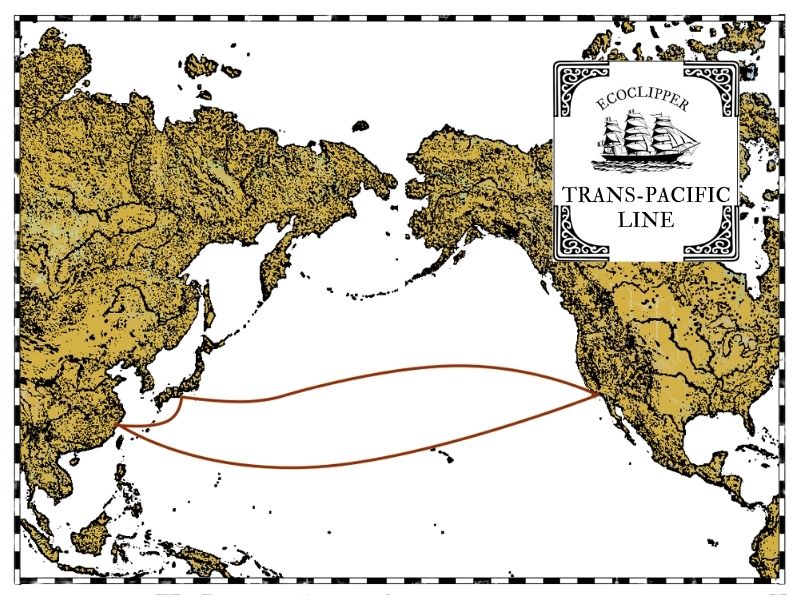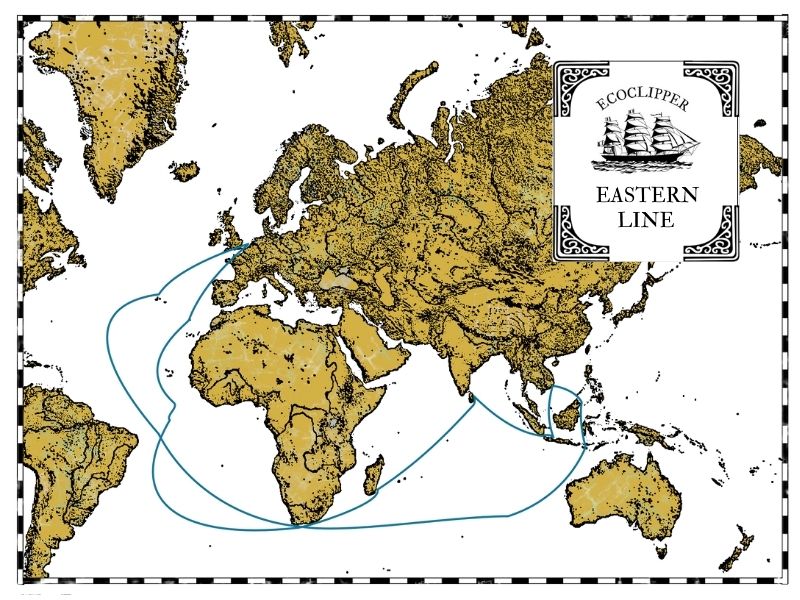sailing routes
Our experience with other companies in the first part of this century has taught us that a successful sail cargo vessel should sail on a fixed route and schedule. This means that each ship will be assigned its own line, with a few different ports that she regularly visits. The different trading areas with the most promising logistic streams are: The North Atlantic route, the North Pacific route and the global route. On each route different ships can be utilised to achieve a higher round trip frequency, and thus create a more convenient service for customers.
European Line
Sailing cargo vessel “De Tukker” navigates through the North Sea, Baltic Sea, English Channel, and Irish Sea, providing an extensive sailing area for transporting goods. These seas are known for their rich maritime history and are frequented by many cargo ships, making them a vital hub for commerce. “De Tukker” contributes to this legacy, delivering goods in an environmentally friendly way while sailing through these seas.
Transatlantic Line
The Transatlantic Line holds the promise of the most favourable meteorological and economical circumstances. Heading west a vessel can easily follow the easterly trade-winds. When returning from the Americas to Europe the westerly winds of the North Atlantic depressions are a sure promise for speed. In recent years this route has become well established by sail cargo companies.
Trans-Pacific Line
The Trans-Pacific Line holds similar opportunities but over greater distances than the Trans Atlantic Line. The routing itself can be compared to the Atlantic run, since both routes follow roughly the same latitude and take advantage of the trade winds and depressions. Economically, this route will serve the steady cargo streams from East Asia to North America.
Global Line
The Global Line departs Europe after visiting Cape town in South Africa, then leaves the Atlantic Ocean via the Cape of Good Hope to the east. It follows the sailing highway of the roaring forties and screaming fifties and circumnavigates the globe. The ships on this route might visit ports in India, Indonesia, Australia or New Zealand. Then they will ’round’ the famous Cape Horn and dock in some more South American ports before heading back to Europe.




